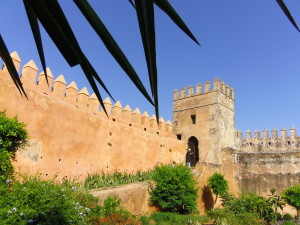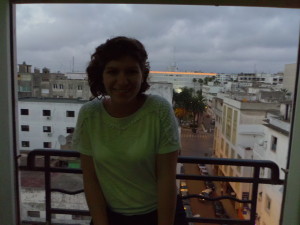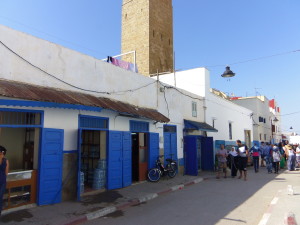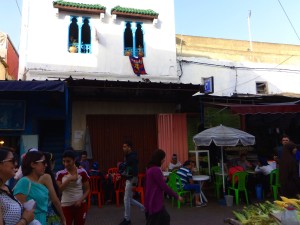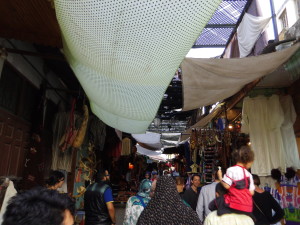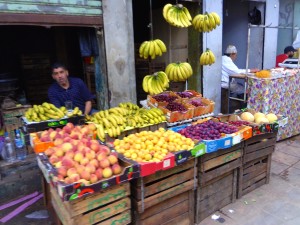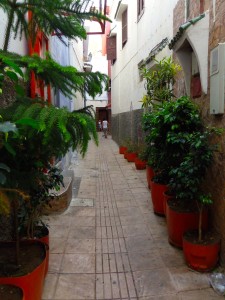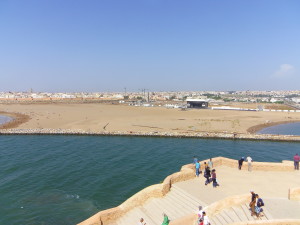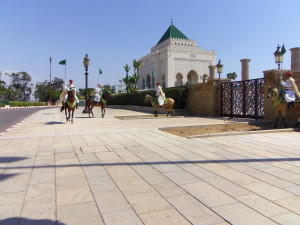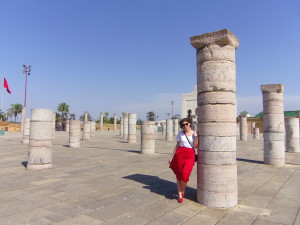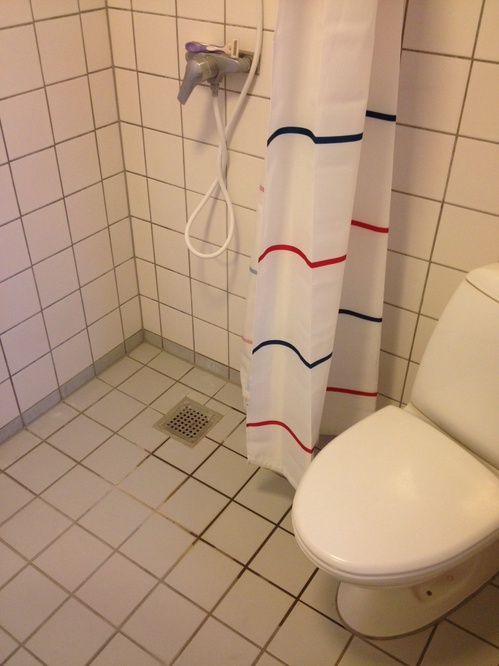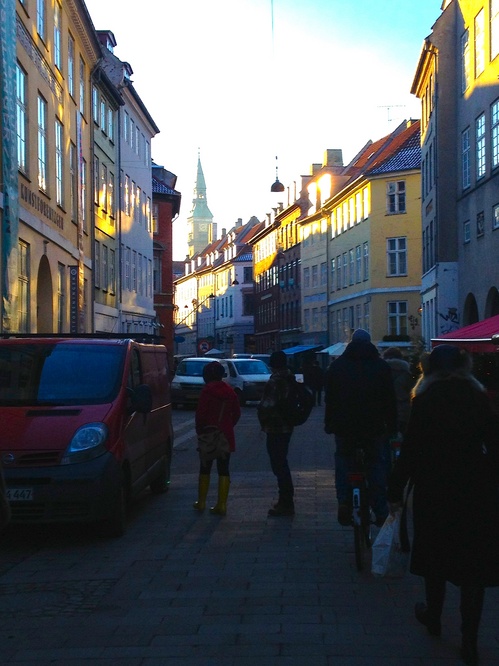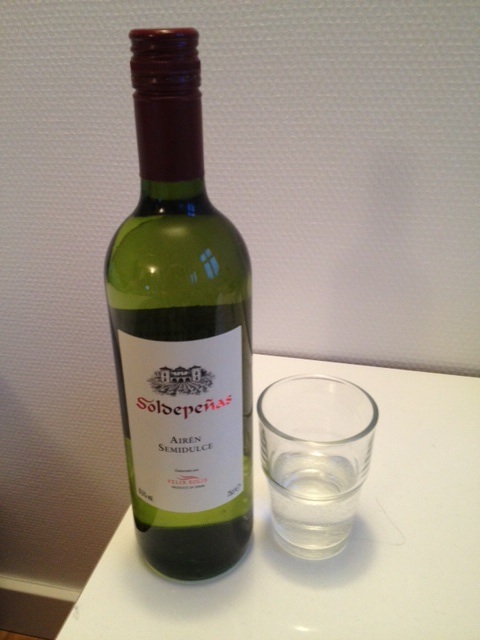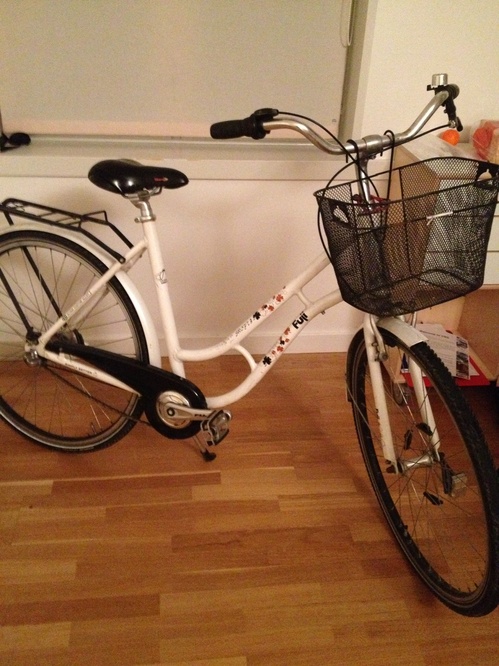Location: Rabat, Morocco
I now live in a city surrounded by age-old walls, where you can buy anything in the street markets, where melons are sold by the bag full, where you will get run over by a petite taxi, where the men congregate in cafes to sit and face the street and drink tea or coffee, where the muezzin can be heard through the streets everyday, where cats sleep curled up at every street corner, a city with the most ornate doors, the most confusing lack of street signs, and a wonderful mix of French, FusHa (Arabic) and Darija (Moroccan colloquial Arabic). This country has been conquered by the Carthaginians, the Romans, the Vandals, the Byzantines, the Arabs, the Turks, the Spanish, and the French, yet today it has it’s distinctive identity that fuses everything together.
My home is now one of street vendors willing to barter with you for any price, and markets where chickens that were alive and laid eggs for my breakfast are now for sale to make tajine for dinner. It’s one with kids running everywhere, and where my friend can wear his Barça team jersey and get cheers when walking down the street. My little host brothers watch Cartoon Network in Arabic, and the oldest ones is already learning English ( having already mastered French, Arabic, and Darija). Their home is very spacious and open- the idea in Morocco is to see but not to be seen- so there are few windows to the outside and those that are are gated like mine. There’s ornate crown molding on the ceilings and pretty tiles on the stairs, couches along the sides and two televisions in the same room (Moroccans apparently watch a lot of TV, a lot of it Arabic-dubbed foreign stuff). The middle of their house is entirely open to the sky. My first worry was if birds come in, but then I realised that rain would be a bigger problem. When I asked my host mum about this, she just responded with l-Hamdullah, If Gods wills it then okay. I guess that’s a good an attitude as any.
We live in the medina, the old city that is a winding maze of narrow unmarked streets surrounded by walls. In order to get out, you need to follow a road that leads to a Bab, a gate. On the 40 minute walk to school in the morning (I live the furtherest away incidentally), it is not bad, but in the afternoon and evening, every man and his brother is out with fresh fruit carts, pastry shops, with everything under the sun to sell spread out on blankets in the middle of the street or sidewalk. (You certainly have to mind where you step- in addition to the vendor’s wares, all sorts of fruit matter and puddles from when they spray down the streets each night make it so you really have to be careful- hence the name of this lesson) Mopeds on their own or carrying carts weave in and around the crowd of people. Outside of the medina it’s more like a normal city, with traffic and streets with shops and sidewalks, though in general everything is run down and dirty, but no one seems to mind. ( We did go out to Agdal, the richer, newer neighborhood on Saturday and that was more like New York or something similar).
On the streets, it really is a 50/50 mix between females wearing the hijab and those who do not. Certainly, in general people dress more modestly than in the United States, but it is not the ultra-you-must-cover-up atmosphere that we were told to expect. I’ve seen women wearing sleeveless tanktops, leggings, and a few in shorts. During program orientation at the IES Abroad Centre, we had a session with an American expat who has been living in Morocco for 20 years. She also scoffed at the dress expectations we were given. Not that I would recommend walking around baring everything, but what you wear is going to draw no less looks than the fact that you’re not Moroccan. She told us that not dressing scandalously is only to respect the customs of our host families; nothing will stop people, especially men for the females, from looking at you. They (the men) will be interested in you no matter what you’re wearing.
The severity of the dress expectations was one misconception. The male attention was another. Everyone warned me that walking through the streets as a female was going to be very different than in the United States, and that verbal harassment was unfortunately normal. So far, either walking with blokes, girls, or on my own (something else I was warned against), I’ve experienced nothing that made me uncomfortable. The worst that anyone will do is try and talk to you, but because all the English they know is “hello” or “welcome”, all I’ve gotten is a lot of very friendly attempts at getting my attention. Needless to say, I feel very welcomed by this point. I’m sure they’re saying other things in Arabic, but since I can’t understand them it doesn’t bother me at all. It’s actually all in all just amusing and funny. One of the girls on my program is blond, so walking with her we did get an “I love you”, but all you can really do is laugh. No one will do anything other than cat call, beyond that they leave you alone. At the worst, you just simply have to watch your step and forcefully say, “la, šukran, non, merci” and you’re absolutely fine to walk around with no problem.
Location: Rabat, Morocco


